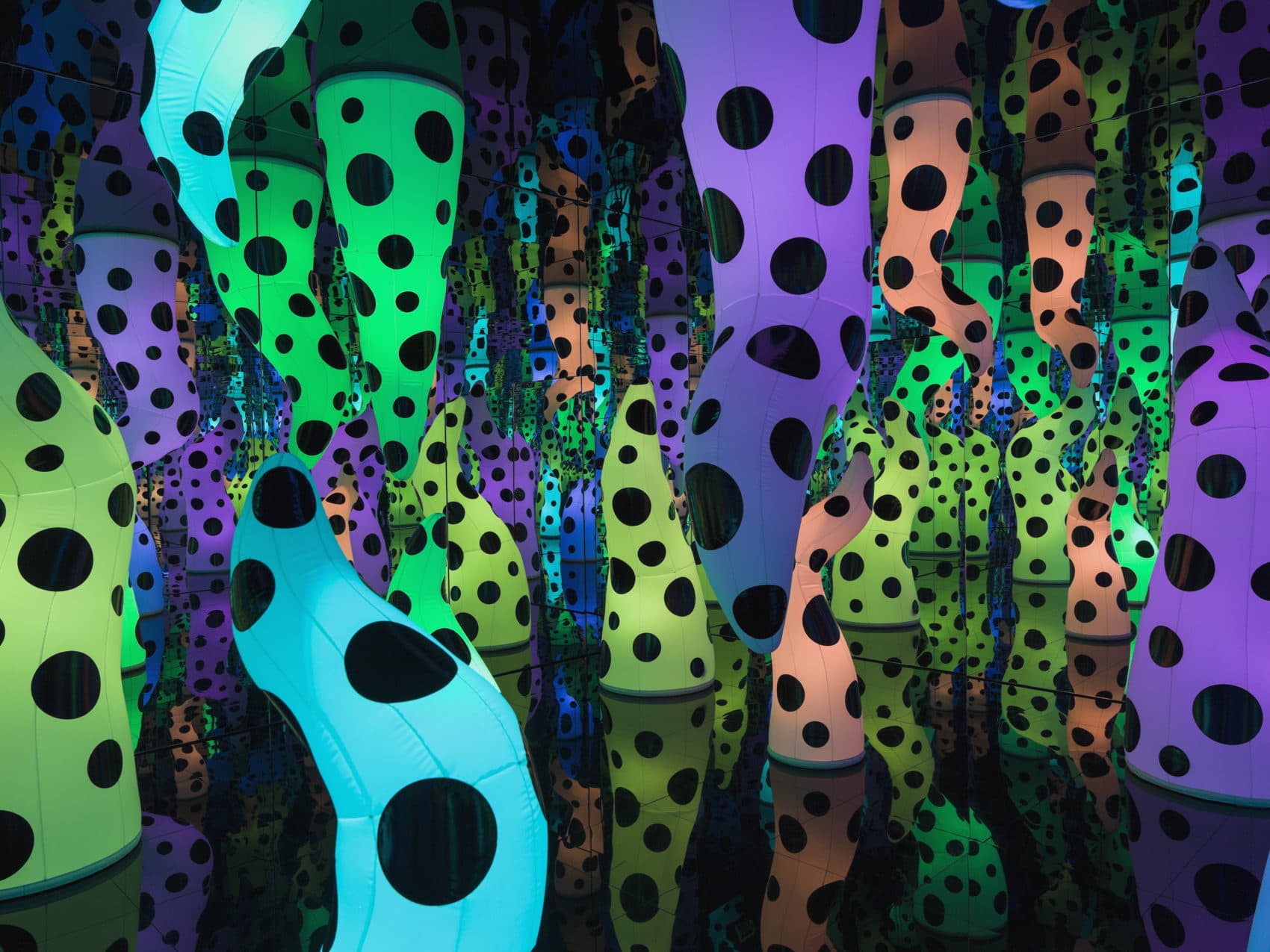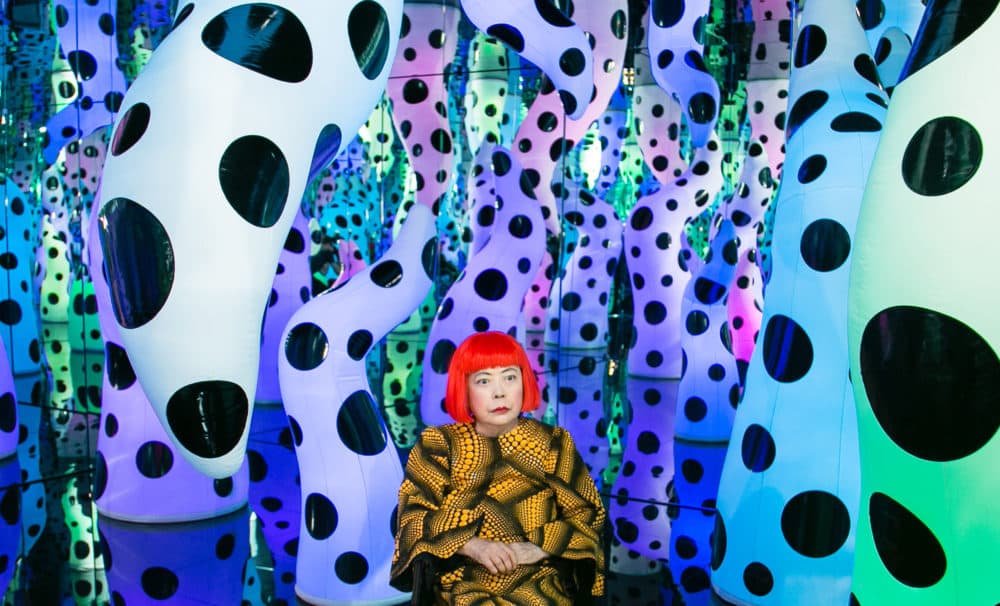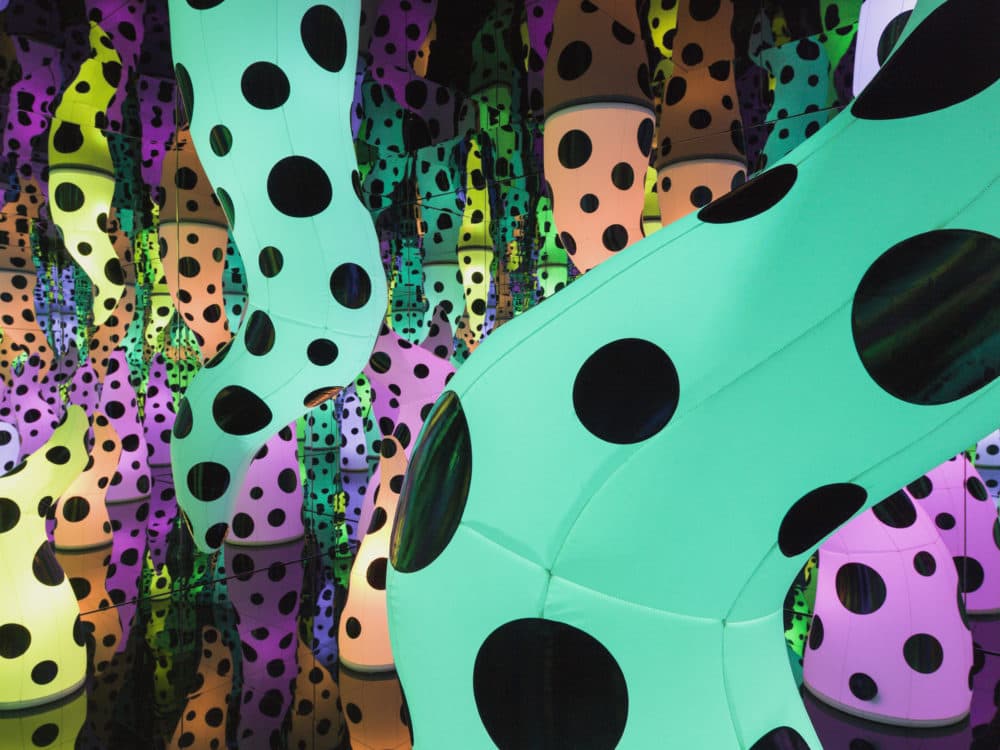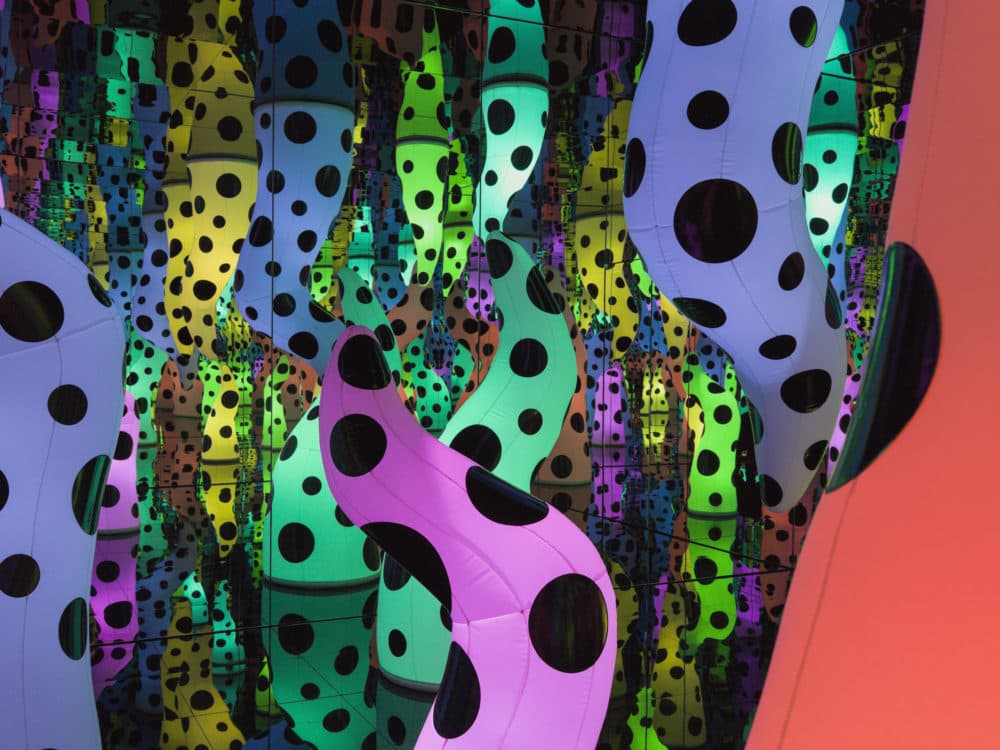Advertisement
Fire Up Your Instagram: A Psychedelic ‘Infinity Room’ Lands (Permanently) At The ICA

As an exhibition of Yayoi Kusama's infinity rooms toured the U.S. over the past couple years, visitors queued up for hours to spend just a few minutes inside the installations. And there's a reason. Each of these colorful chambers is a galaxy unto itself, a dazzling mirrored landscape that seems to stretch on forever. And the Institute of Contemporary Art in Boston has now acquired the largest one.
The piece, titled “Love Is Calling,” is one of 20 existing infinity mirror rooms. “It’s an extremely important work historically,” says ICA director Jill Medvedow.
“Kusama is one of the most important artists of really the post-war era — and an extraordinary woman.”

The acquisition is a major coup for the ICA, which only launched its permanent collection in 2006. The museum joins a number of North American institutions to acquire an infinity mirror rooms in recent years, including the Broad Museum in Los Angeles and the North Carolina Museum of Art.
“Love Is Calling” measures approximately 20 by 28 feet and can accommodate around a dozen people at once — far more than its smaller brethren, which typically only allow one or two visitors at a time. The installation is slated to debut next fall and will rotate in and out of public view with the rest of the ICA's permanent collection. It joins one other Kusama at the museum, a drawing from 1953.
Kusama, 89, is regularly ranked among the top 10 most collectible living artists in the world and is the top-selling female artist alive. The ICA purchased “Love Is Calling” with money raised by a group of donors, though it declined to name the amount. Another Kusama infinity mirror room was recently acquired by the Art Gallery of Ontario for $2 million in Canadian dollars — a portion of which was raised in a public crowdfunding effort.
The artist created the first of these environments in 1965. The infinity rooms feature mirrored walls, ceilings and floors and the occasional reflecting pool. Colored lights, polka dots, sculptures and other motifs multiply endlessly inside the immersive chambers, which seem to subsume visitors within their reflective depths. “Love Is Calling,” which Kusama created in 2013, is distinctive for its glowing, tentacle-like inflatable sculptures and a soundtrack of the artist reciting her poem “Residing in a Castle of Shed Tears” in Japanese.
Advertisement

“It kind of dematerializes your image as you see it repeated and repeated through mirrors,” Medvedow says of the installation. “So in one sense it’s a fracturing of self, and at the other side it is a way to look at oneself, to literally come face-to-face with yourself.”
Kusama was born in 1929 in Matsumoto, Japan. She studied at the Kyoto School of Arts and Crafts before moving to the United States in 1957 and immersing herself in New York City's avant-garde scene. She rubbed shoulders with pop-art luminaries like Andy Warhol and Claes Oldenburg — both of whom she claims stole her ideas — and became known for her provocative “happenings.” She staged naked protests against the Vietnam War, crashed the 33rd Venice Biennial with a guerrilla art show and, in a prescient move, performed (in more than one sense) New York’s first same-sex wedding. She also began to experiment with soft sculpture and mirrored installations that foreground her infinity rooms. But Kusama struggled to achieve the success of her white male counterparts and returned to Japan in 1973, where she spent the next 25 years focused on writing poetry and novels. A lifelong battle with depression landed her in a psychiatric hospital, where she chose to remain. The artist resides there to this day.
"Over a six-decade-long career, Kusama has indelibly shaped some of the most important art movements of the twentieth century, including Minimalism, Pop art, and feminist and performance art," explained ICA curator Eva Respini in a statement.
Infinity and self-obliteration are central preoccupations for Kusama, who frequently uses polka dots to conjure the impression of vast, endless space. The motif appears throughout her oeuvre, including in her paintings, drawings and sculptures.

Kusama's work can be found in collections around the world, from the MoMA and the Whitney in New York to the Tate Gallery in London and Tokyo's Museum of Modern Art. The artist's infinity rooms have enjoyed massive success on social media and prompted renewed interest in her work. But Medvedow says Kusama is still not appreciated to the extent that she should be.
“It is a lot harder for a woman to achieve the same kind of place in museums, or in the market, or in terms of scholarship and recognition, [as a man],” she says. Kusama's work joins pieces by other female luminaries like Eva Hesse and Louise Bourgeois in the ICA's Barbara Lee Collection of Art by Women.
With the acquisition of “Love Is Calling,” the ICA helps shore up Kusama’s legacy — one that's on track to prove as durable in the history books as it has on Instagram.
This article was originally published on January 15, 2019.
This segment aired on January 15, 2019.
